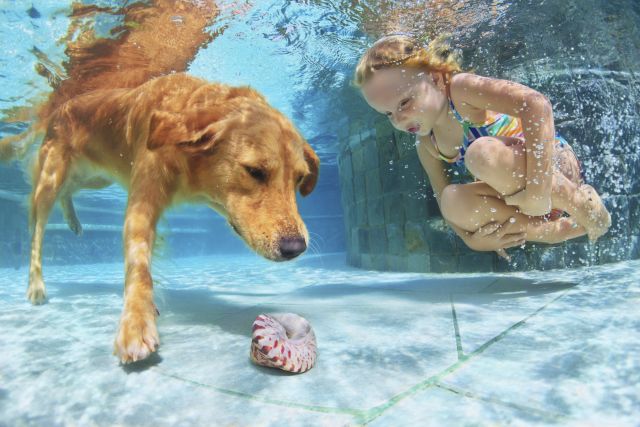Updated on January 26, 2024.
Healthier weight, greater self-confidence, better grades at school, improved blood pressure, a quicker brain: The perks of exercise are as vital for kids as for adults. It's a shame, then, that so many 8- to 18-year-olds aren't getting enough exercise and enjoying those benefits. Instead, kids in this age group average an estimated 7.5 hours a day staring at screens, mainly TV or video games.
Before you pull the plug, here's what researchers have found to be the best and worst ways to get kids moving and enjoying exercise.
How much exercise do kids need, by the way? According to the Centers for Disease Control and Prevention, kids between the ages of 6 and 17 years should be active for at least 60 minutes each day. Kids between 3 and 5 years should be active throughout the day.
Top ways to get kids moving
It may take a little work and some investment, but here are some research-backed ways to help motivate and inspire your kids to exercise more.
Get a furry friend. Kids with dogs watch less TV and are more physically active than those whose families don't include a canine.
Act like they're the next LeBron James or Alex Morgan. Parents who believe their offspring have athletic ability are more likely to have kids who are physically active. And that belief-to-reality transition starts early: The researchers who found this connection were looking at preschoolers at home, not high school jocks.
Gear up appropriately. Don't send your young ones to school in fancy outfits or flip-flops. It'll keep them from running around the playground and swinging on the monkey bars. Generally speaking, stretchy clothes like sweatpants or track pants are a good bet, as are sneakers or running shoes. Consult with your kids' school on recess-approved gear if you have any questions.
Be a role model. According to some research, kids with active parents are five to six times more physical than kids with couch-potato moms and dads.
Limit screen time. Don't put a TV in kids' bedrooms or leave one on when no one is watching. Children whose parents set rules about screen time spend about 3 hours less staring at electronics each day than do kids with less stringent guardrails.
Think twice about these approaches to exercise
These may seems like winning strategies, but research suggests they don't yield results in terms of more physical activity for kids.
Don't depend on team sports. Only 24 percent of kids on soccer, baseball, or softball teams get the full recommended hour of physical activity when they play or practice. Most are inactive for 30 minutes or so each hour.
Don't expect kids to work out like you do. Young minds and muscles are built for stop-and-start action, not a long, steady jog. Think activities like tag, kick the can, red-light-green-light, capture the flag, or activities with lots of variety, such as walking on a trail dotted with exercise equipment or organizing a game of kickball or Frisbee. This principle holds until kids are tweens or teens, when rising hormone levels prime their muscles for more sustained activities, such as hikes, swimming laps, or long bike rides.







